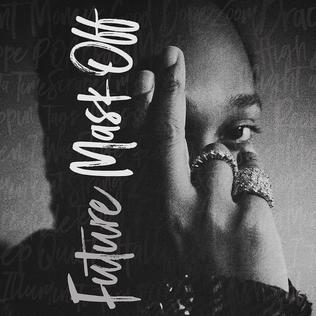Adulthood#
There is nothing further for a warrior here. We drive bargains. Old men’s work. Young men make wars – and virtues of war are the virtues of young men – courage and hope for the future. And then old men make the peace, and the vices of peace are the vices of old men – mistrust and caution. It must be so.
– Feisal
Show code cell source
import matplotlib.pyplot as plt
import numpy as np
def draw_triangle(ax, vertices, labels, color='black'):
"""Draws a triangle given vertices and labels for each vertex with matching color."""
triangle = plt.Polygon(vertices, edgecolor=color, fill=None, linewidth=1.5)
ax.add_patch(triangle)
for i, (x, y) in enumerate(vertices):
ax.text(x, y, labels[i], fontsize=12, ha='center', va='center', color=color) # Set label color
def get_triangle_vertices_3d(center, radius, perspective_scale, tilt):
"""
Returns the vertices of a tilted equilateral triangle for a 3D effect.
`perspective_scale` shrinks the triangle to simulate depth.
`tilt` applies a slight rotation for perspective effect.
"""
angles = np.linspace(0, 2 * np.pi, 4)[:-1] + np.pi/2 # angles for vertices of an equilateral triangle
vertices = np.column_stack([center[0] + radius * perspective_scale * np.cos(angles + tilt),
center[1] + radius * perspective_scale * np.sin(angles + tilt)])
return vertices
# Create the plot
fig, ax = plt.subplots(figsize=(12, 12)) # Adjust the width and height as needed
ax.set_aspect('equal')
# Define the centers for each triangle, shifting each down from the previous
centers = [(0, 10), (0, 0), (0, -10)] # Blue at the top, green in the middle, red at the bottom
radii = [6, 4.5, 3] # Adjusting radii for each layer
triads = [
['Faith', 'Love', 'Hope'], # Blue topmost triangle
['Loyalty', 'Transactional', 'Recalibration'], # Green middle triangle
['Betrayal', 'Power', 'Survival'] # Red bottom triangle
]
# Set the color scheme: blue, green, red
colors = ['paleturquoise', 'lightgreen', 'lightsalmon']
# 3D perspective parameters: smaller scale as the fractal moves inward (simulating depth)
scales = [1.4, 0.9, 0.7] # simulate depth
tilts = [0, np.pi / 12, np.pi / 6] # slight rotation for perspective
# Draw the triangles with increasing radius and perspective scaling
for center, radius, triad, color, scale, tilt in zip(centers, radii, triads, colors, scales, tilts):
vertices = get_triangle_vertices_3d(center, radius, scale, tilt)
draw_triangle(ax, vertices, triad, color=color)
# Set limits and hide axes to fit the frame
ax.set_xlim(-10, 10)
ax.set_ylim(-20, 20)
ax.axis('off')
# Save the plot as 'logo.png'
# plt.savefig('figures/logo.png', dpi=300, bbox_inches='tight')
# Display the plot
plt.show()


Fig. 37 Noradrenaline and transformation, Dopamine and tokenization, Serotonin and embodiment. The substance that most closely mirrors oxytocin’s pharmacodynamics and effects is MDMA (3,4-methylenedioxymethamphetamine), commonly known as “ecstasy” or “molly.” Here’s why: Pharmacodynamics- 1. Oxytocin Release: MDMA stimulates the release of oxytocin in the brain, particularly in regions associated with social bonding and emotional processing (e.g., the hypothalamus). This effect underlies its reputation for enhancing feelings of trust, empathy, and emotional closeness. 2. Serotonin System Activation: MDMA primarily works by increasing serotonin levels, which indirectly promotes oxytocin release. Oxytocin and serotonin pathways are deeply interconnected in modulating mood and social behaviors. Effects: 1. Social Bonding: Both oxytocin and MDMA promote prosocial behaviors like increased trust, emotional openness, and reduced social anxiety. 2. Emotional Euphoria: Like oxytocin, MDMA enhances emotional warmth and reduces fear or defensiveness in social interactions. 3. Anxiolytic Properties: Both have calming effects that help reduce stress and anxiety in certain contexts. Differences: 1. Neurochemical Mechanisms: While oxytocin acts primarily on its own receptors (oxytocin receptors), MDMA has a broader mechanism, including effects on serotonin, dopamine, and norepinephrine systems. 2. Duration and Intensity: The effects of MDMA are more intense and longer-lasting compared to endogenous oxytocin release, making it prone to abuse and adverse effects. Risks of MDMA Compared to Oxytocin: While MDMA mimics some of oxytocin’s effects, its widespread neurochemical action comes with significant risks, including: Neurotoxicity with repeated use, Risk of dehydration or overheating during use, Post-use “crash,” leading to depression and fatigue due to serotonin depletion. Oxytocin itself, when used clinically (e.g., as a nasal spray in research), has not shown the same abuse potential, likely because its effects are more subtle and context-dependent, requiring specific social or environmental triggers to manifest its benefits.#

